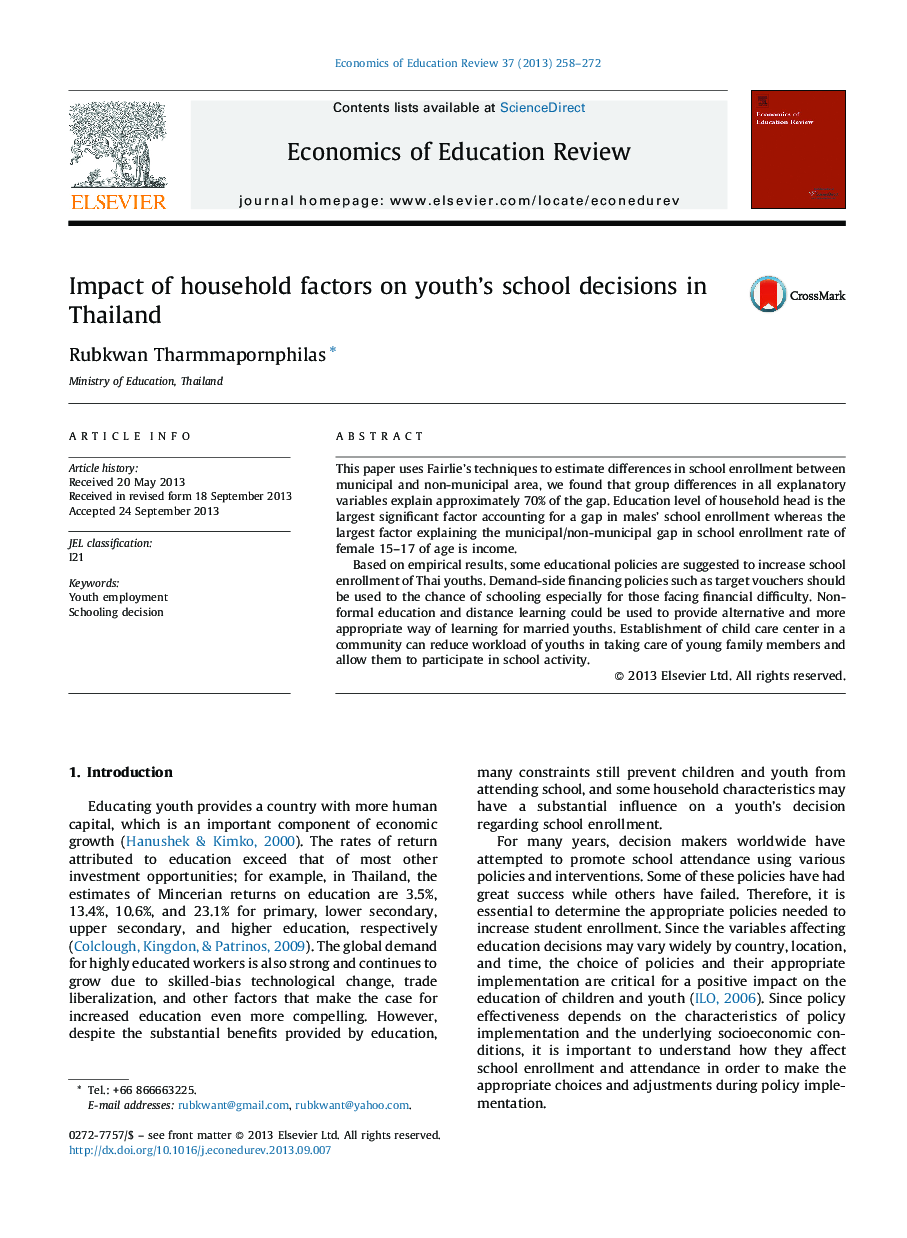| Article ID | Journal | Published Year | Pages | File Type |
|---|---|---|---|---|
| 354609 | Economics of Education Review | 2013 | 15 Pages |
•The paper analyzes the household factors that determine the investment decision on youth's education.•The paper also decomposes the school enrollment rate gap between municipal and non-municipal areas.•Family background significantly affects youth's school decisions.•Household income and parental education account for municipal/non-municipal gap in school enrollment.
This paper uses Fairlie's techniques to estimate differences in school enrollment between municipal and non-municipal area, we found that group differences in all explanatory variables explain approximately 70% of the gap. Education level of household head is the largest significant factor accounting for a gap in males’ school enrollment whereas the largest factor explaining the municipal/non-municipal gap in school enrollment rate of female 15–17 of age is income.Based on empirical results, some educational policies are suggested to increase school enrollment of Thai youths. Demand-side financing policies such as target vouchers should be used to the chance of schooling especially for those facing financial difficulty. Non-formal education and distance learning could be used to provide alternative and more appropriate way of learning for married youths. Establishment of child care center in a community can reduce workload of youths in taking care of young family members and allow them to participate in school activity.
